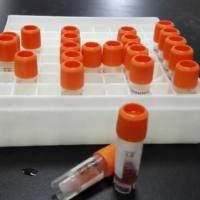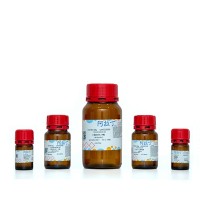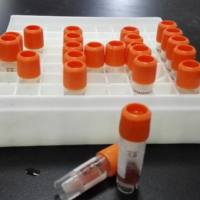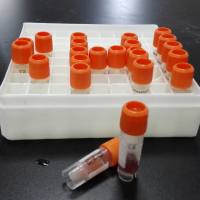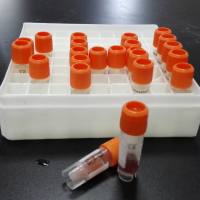Measuring Altered Disposition of Xenobiotics in Experimental Models of Liver Disease
互联网
- Abstract
- Table of Contents
- Materials
- Figures
- Literature Cited
Abstract
Understanding the metabolic pathway and excretion mechanisms governing the disposition of a compound is essential to the safe use of pharmaceutical agents. Because the liver is the primary organ responsible for the metabolism and elimination of xenobiotics, chronic liver disease can have a significant effect on the disposition of many xenobiotics due to changes in the expression or function of drug metabolizing enzymes and transporters. Liver disease can result in increased retention of a xenobiotic within the body, causing greater exposure of the individual to a potentially harmful compound, which may lead to toxicity. On the other hand, liver disease may also up?regulate the elimination processes of a xenobiotic, accelerating its removal from the body. With regard to a pharmaceutical agent, enhanced elimination may result in a decreased pharmacologic effect. Such alterations may necessitate dosage adjustments to achieve the desired therapeutic outcome. Curr. Protoc. Toxicol. 52:23.1.1?23.1.17. © 2012 by John Wiley & Sons, Inc.
Keywords: nonalcoholic fatty liver disease; drug disposition; nonalcoholic steatohepatitis; steatosis
Table of Contents
- Introduction
- Basic Protocol 1: Measurement of Xenobiotic Disposition in Rat Plasma and Bile Through Femoral Artery and Vein Cannulations and Common Bile Duct Cannulation
- Alternate Protocol 1: Measurement of Xenobiotic Disposition in Mouse Plasma Through Carotid Artery and Jugular Vein Cannulations
- Commentary
- Literature Cited
- Figures
Materials
Basic Protocol 1: Measurement of Xenobiotic Disposition in Rat Plasma and Bile Through Femoral Artery and Vein Cannulations and Common Bile Duct Cannulation
Materials
Alternate Protocol 1: Measurement of Xenobiotic Disposition in Mouse Plasma Through Carotid Artery and Jugular Vein Cannulations
|
Figures
-
Figure 23.1.1 Femoral artery and vein cannulation and common bile duct cannulation of the rat. (A ) Left to right: saphenous nerve (white), femoral artery (pale pink, not clearly visible in image), femoral vein (dark red). (B ) Dissection of the saphenous nerve from the femoral artery. (C ) Passing of silk suture beneath the femoral artery. (D ) Ligation of the femoral artery distal to the peritoneum and incision of the femoral artery. (E ) Insertion of the cannula into the femoral artery. (F ) Tying of the femoral artery to the cannula using a silk suture. (G ) Dissection of the common bile duct from surrounding connective tissue. The liver is visible in the background. (H ) Ligation of the common bile duct proximal to the small intestine and tying of the common bile duct to the cannula. View Image -
Figure 23.1.2 Diagram of cannulation and clamping procedures for cannulation of the carotid artery and jugular vein of the mouse. View Image
Videos
Literature Cited
| Literature Cited | |
| Adams, L.A. and Angulo, P. 2005. Recent concepts in non‐alcoholic fatty liver disease. Diab. Med. 22:1129‐1133. | |
| Ali, R. and Cusi, K. 2009. New diagnostic and treatment approaches in non‐alcoholic fatty liver disease (NAFLD). Ann. Med. 41:265‐278. | |
| Angulo, P. 2002. Nonalcoholic fatty liver disease. N. Engl. J. Med. 346:1221‐1231. | |
| Arsov, T., Larter, C.Z., Nolan, C.J., Petrovsky, N., Goodnow, C.C., Teoh, N.C., Yeh, M.M., and Farrell, G.C. 2006a. Adaptive failure to high‐fat diet characterizes steatohepatitis in Alms1 mutant mice. Biochem. Biophys. Res. Comm. 342:1152‐1159. | |
| Arsov, T., Silva, D.G., O'Bryan, M.K., Sainsbury, A., Lee, N.J., Kennedy, C., Manji, S.S.M., Nelms, K., Liu, C., Vinuesa, C.G., de Kretser, D.M., Goodnow, C.C., and Petrovsky, N. 2006b. Fat Aussie‐A New Alström Syndrome mouse showing a critical role for ALMS1 in obesity, diabetes, and spermatogenesis. Mol. Endocrinol. 20:1610‐1622. | |
| Barr, J., Vázquez‐Chantada, M., Alonso, C., Pérez‐Cormenzana, M., Mayo, R., Galán, A., Caballería, J., Martín‐Duce, A., Tran, A., Wagner, C., Luka, Z., Lu, S.C., Castro, A., Le Marchand‐Brustel, Y., Martínez‐Chantar, M.L., Veyrie, N., Clément, K., Tordjman, J., Gaul, P., and Mato, J.M. 2010. Liquid chromatography‐mass‐spectrometry‐based parallel profiling of human and mouse model serum reveals putative biomarkers associated with the progression of nonalcoholic fatty liver disease. J. Proteome Res. 9:4501‐4512. | |
| Byrne, C.D., Olufadi, R., Bruce, K.D., Cagampang, F.R., and Ahmed, M.H. 2009. Metabolic disturbances in non‐alcoholic fatty liver disease. Clin. Sci. 116:539‐564. | |
| Carmiel‐Haggai, M., Cederbaum, A.I., and Neito, N. 2005. A high‐fat diet leads to the progression of non‐alcoholic fatty liver disease in obese rats. FASEB J. 19:136‐138. | |
| Cheung, O. and Sanyal, A.J. 2009. Recent advances in nonalcoholic fatty liver disease. Curr. Opin. Gastroenterol. 25:230‐237. | |
| Day, C.P. 2002. Pathogenesis of steatohepatitis. Best Pract. Res. Clin. Gastroenterol. 16:663‐678. | |
| Donovan, J. and Brown, P. 2006. Euthanasia. Curr. Protoc. Immunol. 73:1.8.1‐1.8.4. | |
| Fan, J.G. 2008. Impact of non‐alcoholic fatty liver disease on accelerated metabolic complications. J. Digest. Dis. 9:63‐67. | |
| Fan, J.G. and Qiao, L. 2009. Commonly used animal models of non‐alcoholic steatohepatitis. Hepatobiliary Pancreat. Dis. Int. 8:233‐240. | |
| Fisher, C.D., Lickteig, A.J., Augustine, L.M., Oude Elferink, R.P.J., Besselsen, D.G., Erickson, R.P., and Cherrington, N.J. 2009. Experimental non‐alcoholic fatty liver disease results in decreased hepatic uptake transporter expression and function in rats. Eur. J. Pharmacol. 613:119‐127. | |
| Hanley, M.J., Abernethy, D.R., and Greenblatt, D.J. 2010. Effect of obesity on the pharmacokinetics of drugs in humans. Clin. Pharmacokinetics 49:71‐87. | |
| Jow, J., Choi, S.S., and Diehl, A.M. 2008. Mechanisms of disease progression in nonalcoholic fatty liver disease. Semin. Liver Dis. 28:370‐379. | |
| Kleiner, D.E., Brunt, E.M., Van Natta, M., Behling, C., Contos, M.J., Cummings, O.W., Ferrell, L.D., Liu, Y., Torbenson, M.S., Unalp‐Arida, A., Yeh, M., McCullough, A.J., and Sanyal, A.J. 2005. Design and validation of a histological scoring system for nonalcoholic fatty liver disease. Hepatology 41:1313‐1321. | |
| Koteish, A. and Mae Diehl, A. 2002. Animal models of steatohepatitis. Best Pract. Res. Clin. Gastroenterol. 16:679‐690. | |
| Lall, C.G., Aisen, A.M., Bansal, N., and Sandrasegaran, K. 2008. Nonalcoholic fatty liver disease. Am. J. Roentgenol. 190:993‐1002. | |
| Larter, C.Z. and Yeh, M.M. 2008. Animal models of NASH: Getting both pathology and metabolic contaxt right. J. Gastroenterol. Hepatol. 23:1635‐1648. | |
| Larter, C.Z., Yeh, M.M., Van Rooyen, D.M., Teoh, N.C., Brooling, J., Hou, J.Y., Williams, J., Clyne, M., Nolan, C.J., and Farrell, G.C. 2009. Roles of adipose restriction and metabolic factors in progression of steatosis to steatohepatitis in obese, diabetic mice. J. Gastroenterol. Hepatol. 24:1658‐1668. | |
| Lickteig, A.J., Fisher, C.D., Augustine, L.M., Aleksunes, L.M., Besselsen, D.G., Slitt, A.L., Manautou, J.E., and Cherrington, N.J. 2007. Efflux transporter expression and acetaminophen metabolite excretion are altered in rodent models of nonalcoholic fatty liver disease. Drug Metab. Dispos. 35:1970‐1978. | |
| Malone, M. 2003. Altered drug disposition in obesity and after bariatric surgery. Nutr. Clin. Pract. 18:131‐135. | |
| Marchesini, G., Bugianesi, E., Forlani, G., Cerrelli, F., Lenzi, M., Manini, R., Natale, S., Vanni, N., Melchionda, N., and Rizzetto, M. 2003. Nonalcoholic fatty liver, steatohepatitis, and the metabolic syndrome. Hepatology 37:917‐923. | |
| Marra, F., Gastaldelli, A., Baroni, G.S., Tell, G., and Tiribelli, C. 2008. Molecular basis and mechanisms of progression of non‐alcoholic steatohepatitis. Trends Mol. Med. 14:72‐81. | |
| Mattar, S.G., Valcu, L.M., Rabinovitz, M., Demetris, A.J., Krasinskas, A.M., Barinas‐Mitchell, E., Eid, G.M., Ramanathan, R., Taylor, D.S., and Schauer, P.R. 2005. Surgically‐induced weight loss significantly improves nonalcoholic fatty liver disease and the metabolic syndrome. Ann. Surg. 242:610‐620. | |
| McCullough, A.J. 2006. Pathophysiology of nonalcoholic steatohepatitis. J. Clin. Gastroenterol. 40:S17‐S29. | |
| Schattenberg, J.M. and Gale, P.R. 2010. Animal models of non‐alcoholic steatohepatitis: Of mice and man. Digestive Dis. 28:247‐254. | |
| Tilg, H. and Moschen, A.R. 2010. Evolution of inflammation in nonalcoholic fatty liver disease: The multiple parallel hits hypothesis. Hepatology 52:1836‐1846. | |
| Varela‐Rey, M., Embade, N., Ariz, U., Lu, S.C., Mato, J.M., and Martinez‐Chantar, M.L. 2009. Non‐alcoholic steatohepatitis and animal models: Understanding the human disease. Int. J. Biochem. Cell Biol. 41:969‐976. | |
| Zahra, F. and Kleiner, D.E. 2011. Update on fatty liver disease and steatohepatitis. Adv. Anatom. Pathol. 18:294‐300. |


